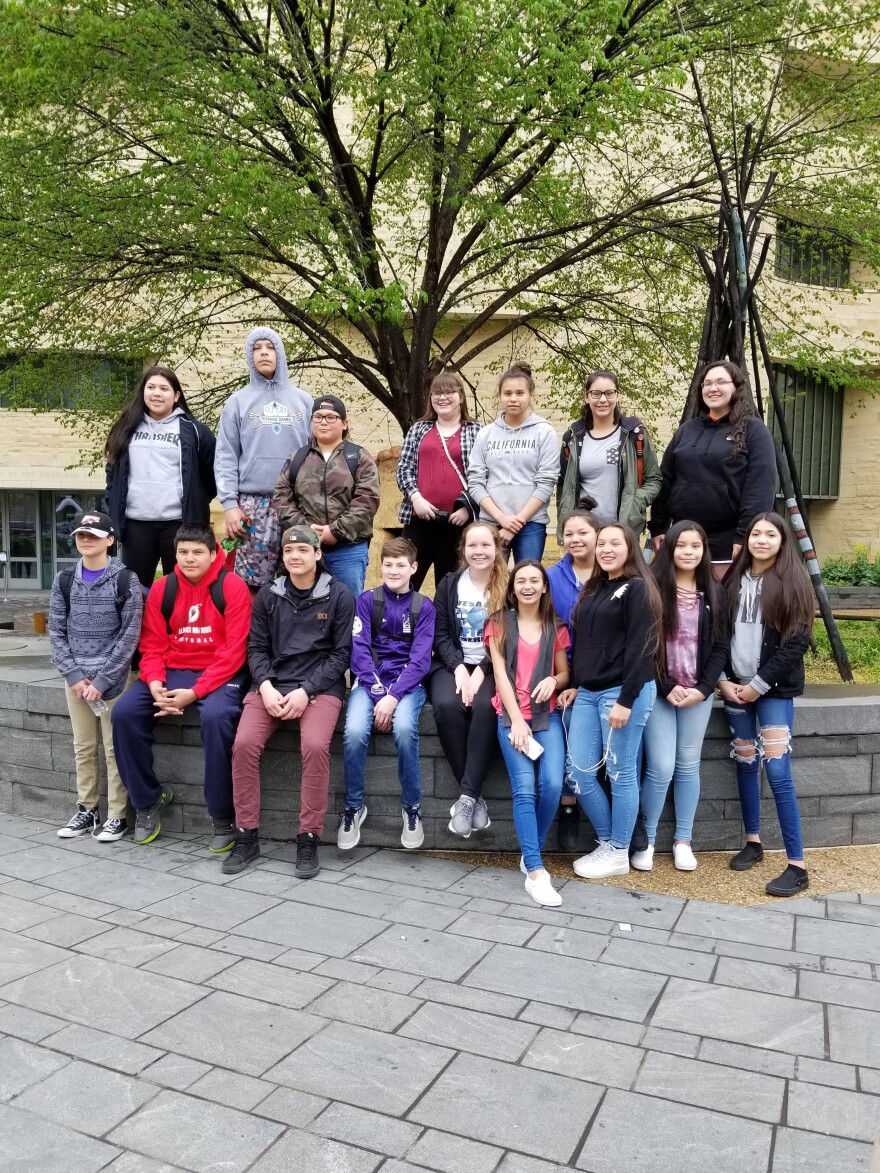Western New York was once the stronghold of the Seneca Nation of Indians, the “Keepers of the Western Door” of the Iroquois Confederacy. What does it mean to celebrate Native American heritage here today?
Every November brings a wave of lessons and cultural presentations to schools that can only mean it’s Native American Heritage Month.
In Buffalo, the November school board meeting opened with a Seneca student reciting the Haudenosaunee, or Iroquois, Thanksgiving Address. And there were more familiar activities, too, like a presentation of traditional Seneca song and dance at P.S. #19 The Native American Magnet School on Nov. 21.
“It’s a busy time of the year for us, sometimes a little tiring, but it’s all worth it in the end to see the Native kids, students in their dress and they’re dancing,” said Martin Jimerson, Jr., one of the presenting singers.

Jimerson is a Seneca culture consultant from the Nation’s Cattaraugus reservation. Performing for a highly diverse but mostly non-Native audience of elementary school students, he explained the meaning of each dance and told students about the prints, feathers and clan markings worn by five Seneca students who joined him onstage.
He also introduced students to the Native instruments he and colleague Chris Tallchief played, confessing that his water drum had some modern attributes—it’s made from PVC pipe.
“The drum beat is like our heart beat. So, when they [the Native students] hear the drum beat, they see the feet tapping there. You know, they want to dance.”
About an hour and fifteen minutes south of Buffalo, Rachael Wolfe lives and works on the Seneca Allegany Indian Territory. Like her father and grandmother before her, she’s a Seneca language teacher in Salamanca.

“It’s one of the only towns that is completely on a Native reservation in the country,” Wolfe said. “That important fact, to me, is something that I like to make sure that all students know, regardless of whether they’re Seneca or not.”
Wolfe spearheads the district’s Native American Heritage Month efforts every year, always considering what kind of information should be shared with both Native and non-Native students.
“Culture, history, statistics… really things that paint a picture that Native American people are still here and still alive and thriving, and we have these rich, beautiful cultures in our communities.”

But Native American communities also face serious, intergenerational challenges. More than one in three Native children live in poverty, according to the Center for Native American Youth, and the suicide rate for young adults aged 15 to 24 is more than double the national rate. Alcohol and substance abuse is also a longstanding challenge, especially on reservations.
Those issues aren’t what Kaihalla, one of Wolfe’s students, wants people to think about when they hear the term “Native American.”
“We’re not all drug addict bums,” Kaihalla said during Wolfe’s Seneca 5 class on a recent morning. “There’s good people that come out of here, and even though we face those struggles all the time, that that doesn’t stop us at all. Like, stay away from the stereotypes you hear about Native Americans.”
Kaihalla is a senior at Salamanca High School and president of the Seneca Youth Council, a student group Wolfe founded and advises. With the support of the school district and the Seneca Nation, the council is active year-round, Wolfe said, because “we don’t stop being Native at the end of the month.”

However, the fleeting annual spotlight on Native American heritage does give area school districts with significant Native populations a boost when it comes to raising awareness about their communities. Jamie Gilbert is the first Native American Liaison for the Niagara Wheatfield School District, where mostly Tuscarora Native students are the largest minority group.
“Often times, the non-Native students will ask questions to my students and my students might say, well, ‘They’re rude,’ and I have to explain, ‘No, they don’t understand. This is why we’re doing this, because this is a perfect opportunity to teach others that we’re here, we’re well.’”
Gilbert was hired 15 years ago to help Native students transition from an elementary school on the Tuscarora Nation Reservation to public middle school and high school. In that time, she said graduation rates have increased and Native students feel more at home off the reservation. But she does still see some students struggling to maintain their Native identities while also trying to fit in.

“What I try to do is to teach students, ‘That’s okay, be who you want to be, it’s okay.’ And I always go back to what my grandma said: ‘You’re Indian because of the blood that runs through your veins, not by what you do and what you say. It’s in your heart.’”
Both Salamanca and Niagara Wheatfield organized homecoming-like spirit weeks for Native American Heritage Month this year. All students were encouraged to participate in different theme days, like wearing the wampum colors purple and white for Haudenosaunee Day. But Wolfe said the bottom line is that heritage month doesn’t define the “Native American-ness” of local communities.
“I’m sure, just like any other culture would agree, that to be appreciated all the time is important.”
Jimerson, the singer, agreed.
“As I always tell the schools and teachers, we’re here all year-round. It’s not just in November.”


